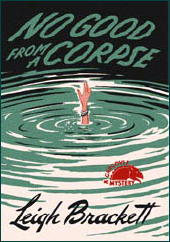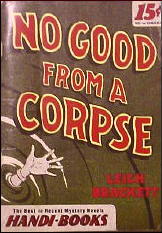Sun 16 Apr 2017
Reviewed by Jonathan Lewis: TWO ON A GUILLOTINE (1965).
Posted by Steve under Horror movies , Reviews[6] Comments
TWO ON A GUILLOTINE. Warner Brothers, 1965. Connie Stevens, Dean Jones, Cesar Romero, Parley Baer, Virginia Gregg, Connie Gilchrist, John Hoyt, Russell Thorson. Producer-director: William Conrad.
Two on a Guillotine, a decidedly uneven Gothic horror movie, features two esteemed character actors who will be quite familiar to anyone who watched more than their fair share of theatrical films and television from the 1960s; namely, Cesar Romero (perhaps best remembered now for portraying The Joker on Batman) and Dean Jones (star of The Love Bug in the movies and Ensign O’Toole on TV). The third star in Two on a Guillotine is singer-actress Connie Stevens, the lead female protagonist, a role that was meant to be a more serious, adult one than the parts she played in largely teenage exploitation fare in the late 1950s (Dragstrip Riot).
In Two on a Guillotine, a film that well-known character actor William Conrad both produced and directed, Connie Stevens has a dual role. She portrays two different, but related, characters – a mother at the very beginning of the film and then later, her daughter. When we are first introduced to Stevens in her role as Melinda Duquesne, wife of the magician, Duquesne (Cesar Romero). She’s also a star in his show, playing the role of a damsel in distress with the seemingly magical ability to escape from the horrible fate that Duquesne sets out for her as part of his theatrical act. As the movie begins, we see her tied up with her arms around her head, with a man pushing a sword into her. But it is all an illusion, a trick. For she was never really in danger and the whole thing, as the camera soon demonstrates, was merely part of a stage act.
Things seem all right between Duquesne and his wife, although there apparently are some difficulties in balancing their professional lives with caring for their young daughter. It’s not that their daughter is physically ill; it’s just that in his life, she seems to be something of any afterthought to the magician. He seems far more concerned with his newest and latest magic trick: a guillotine – with a razor sharp blade, no less. It’s an instrument of death and terror straight out of revolutionary France.
The film quickly shifts in time to some two decades later, with the next scene at Duquesne’s funeral in sunny California. A young woman rushes up to the area where the coffin is located and the mourners are gathered. She looks just like Melinda Duquesne as we saw her earlier, but that’s impossible, for she hasn’t aged a day. The viewer attentive to the tropes of Gothic horror movies such as the one utilized in The Tomb of Ligeia (1964) will quickly recognize what’s transpiring here. Namely, that this beautiful young woman isn’t Melinda at all, but she is Duquesne’s daughter, Cassie portrayed now by Stevens in her second role.
Among those noticing Cassie at the funeral is intrepid reporter Val Henderson (Dean Jones), who soon learns that Duquesne’s last will and testament specified that his daughter Cassie inherit a fortune on the condition that she agrees to stay in his Hollywood mansion for seven nights. This leads us to the basis for the crux of the film: why would Duquesne want his estranged daughter to stay in his house? Is it possible that he’s really not really dead after all and has a magician’s trick up his sleeve?
Those familiar with haunted house movies surely know the basic outline of what comes next. At first, Cassie decides that she will stay in the house – after all, she feels as if she deserves her estranged father’s fortune – and initially appears to give little regard to what might happen next. Soon, with Val and an adorable white house rabbit at her side, Cassie begins to encounter weird goings-on in the house. So much so that Val, who has fallen in love with her in the meantime, becomes determined that no harm come to her.
Unfortunately, as the story continues to unfold, the tone of the movie becomes increasingly uneven. Shifting from moments of light, innocent romance between Cassie and Val to moments of tension and fright, Two on a Guillotine ends up suffering from an identity crisis. Is it a horror movie with light, comic overtones or a quirky, offbeat feature more indebted to René Claire’s I Married a Witch (1942)? Or was it intended to be a darker, more psychologically brooding horror films such as the similarly themed The Mad Magician (1954), starring Vincent Price in the title role?
One possibility that may help explain the film’s tonal unevenness of this film is that the movie’s screenwriters, John Kneubuhl and Henry Slesar, are known to have worked primarily in television, a medium where one needed to be particularly cautious how far one could push the envelope. Indeed, there is definitely a flat, television feel to Two on a Guillotine. Cinematographer Sam Leavitt had a prolific career in Hollywood, but he didn’t lend this story the type of exceptional photography that would have elevated it from competent to something more memorable.
One notable exception is found in the film’s singular dream montage sequence. Distraught and confused, Cassie has a bizarre, hallucinatory dream in which she images various scenarios that might explain, at least in part, what is transpiring all around her. It’s an experimental sequence in an otherwise lackluster film, at least in terms of photography.
In terms of the film’s direction, credit goes to veteran character actor William Conrad who imparts the movie with a workmanlike quality. Although he was better known for his achievements in radio and as a television actor (Cannon, Jake and the Fat Man) who often portrayed a heavy or, in the case of exceptional, albeit nearly forgotten, film noir Tension (1949), in which he portrayed a Mexican-American police detective, William Conrad also worked as a behind the camera as a director as well.
His primary work in that regard was in television rather than in cinema, directing episodes of genre-based series, both well known and obscure, including Highway Patrol, Bold Venture, The Rifleman, Bat Masterson, Route 66, and Naked City. Still, Conrad directed three other feature films: a western entitled The Man from Galveston (1963) starring Jeffrey Hunter, Preston Foster, and James Coburn, and the thrillers The Blood Runs Cold (1965) and Brainstorm (1965).
In contrast to Conrad’s rather prosaic direction, the movie’s score works well quite with the subject matter at hand. Max Steiner, the legendary Hollywood composer whose work include such classic works of American cinema as King Kong (1933), Gone With the Wind (1939), Casablanca (1942), and The Searchers (1956) is credited with a score which is neither too intrusive nor overwrought. The film’s initial scene (discussed above) in which Duquesne “stabs†Cassie’s mother is accompanied by music that fits the mood perfectly. Foreboding and chaotic, Steiner’s musical accompaniment to this scene opens the movie with an intensity that fits the on screen happenings to a hilt.
Unfortunately, there’s then little excitement and intensity in the movie until the ending when the big reveal happens, and Cassie learns that that her father is still alive. She also finds out that her mother died in a gruesome guillotine accident when she and her father were attempting to prepare for his next big act decades ago. And to make matters worse for her, Duquesne has come to believe that Cassie is really her mother, Melinda. Apparently he has brought her to the mansion so that he can “perfect†his guillotine trick.
This is where the film’s tone most strikingly shifts from playful to intense. Duquesne’s reappearing act, as it were, reveals a dark, sinister underbelly at the heart of this film. He truly is mad and maniacal. The lighthearted, albeit contrived, romance between Cassie and Val disappears under the weight of the revelation that Cassie’s mother’s body is buried out somewhere in the yard and that her father is a homicidal maniac.
Even though Romero was a highly competent character actor, his portrayal of Duquesne is not nearly as memorable as Vincent Price’s portrayal of Gallico in John Brahms’s aforementioned The Mad Magician. Also of note: Romeo himself does a disappearing act of sorts during most of the film, and has probably less than a total of ten minutes of screen time. Indeed, for most of the film, we just are witness to Cassie and Val investigating the strange goings-on in Duquesne’s seemingly abandoned mansion.
In conclusion, Two on a Guillotine had the potential, at least on paper, to be a stronger, more sinister feature. The decision to play up the romance between Cassie and Val, not to mention the casting of Dean Jones who had a career of playing particularly non-threatening characters, made it nearly impossible for the film to end up being the fright fest that the movie posters portrayed it to be.
Instead, the movie remains an historical curiosity at best, a black and white horror film produced a time when most were being released in color and a vehicle for Connie Stevens to pursue a more serious and mature acting career, one that never successfully got off the ground in the way that she had intended. While it has its moments, this decidedly quirky movie, by attempting to package lighthearted romance with psychological horror, ends up being an uneven mélange of genres and a rather average horror film, albeit one not without some charm.

